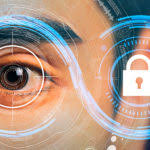Signal Secure Messaging, But Not Infallible.
In an era of increasing digital surveillance and data breaches, secure messaging is paramount. Signal, a free and open-source messaging app, has risen to prominence as a leading choice for those seeking enhanced privacy. But what exactly is Signal, and how secure is it really? The recent revelation that top Trump administration officials inadvertently shared military plans with a journalist in a Signal group chat has brought the app’s security, and its limitations, into the spotlight.
Signal is essentially a messaging app that operates like WhatsApp, Telegram, or iMessage. It allows users to send text messages, make voice and video calls, share photos, videos, and documents, and create group chats. However, what sets Signal apart is its focus on end-to-end encryption.
What Makes Signal Secure?
The cornerstone of Signal’s privacy is its robust end-to-end encryption protocol, often referred to as the Signal Protocol. This means that messages are encrypted on the sender’s device and can only be decrypted on the recipient’s device. Not even Signal itself can read the content of the messages.
Here are some key security features of Signal:
* End-to-End Encryption: As mentioned, this is the foundation of Signal’s security. All communication, from text messages to voice calls, is encrypted using the Signal Protocol.
* Open Source and Auditable: Signal’s code is open source, meaning anyone can examine it for vulnerabilities. This transparency allows security experts and researchers to continuously scrutinize the app and identify potential weaknesses.
* Message Expiration: Signal offers a disappearing message feature, allowing users to set a timer for messages to automatically delete from both the sender and recipient’s devices after a specified duration.
* Metadata Minimization: While Signal requires a phone number to register, it collects minimal metadata about users and their communication patterns.
* Secure Group Chats: Signal implements cryptographic protocols for secure group chats, ensuring that only members can read the messages exchanged within the group.
* Privacy Respecting Development: Signal is developed by the non-profit Signal Foundation, which relies on donations rather than advertising or data monetization. This structure emphasizes privacy over profit.
So, How Secure Is It Really?
Signal is widely considered one of the most secure messaging apps available. Security experts and privacy advocates consistently recommend it for individuals and organizations seeking enhanced protection for their communications. However, as Chris Pierson, founder and CEO of BlackCloak, explained to Katy Tur in response to the Trump administration’s accidental sharing of military plans, Signal is not infallible.
The incident highlights a critical aspect of security: human error. While Signal encrypts the content of messages, it can’t prevent users from inadvertently sharing sensitive information with the wrong people. In this case, officials added a journalist to a group chat containing classified material, demonstrating that even the strongest encryption can be undermined by careless practices.
Limitations to Consider:
* Phone Number Requirement: While Signal only requires a phone number for registration, this association with a real-world identity can be a potential privacy concern for some users.
* Device Security: The security of your Signal conversations also depends on the security of your device. If your phone or computer is compromised, your Signal messages could be vulnerable.
* Screenshotting and Recording: Signal can’t prevent recipients from taking screenshots of messages or recording calls. Be mindful of who you’re communicating with and the potential for your conversations to be captured.
* Social Engineering: Users can still fall victim to phishing or other social engineering attacks that compromise their Signal accounts or personal information.
* Third-Party Key Compromise: While unlikely, a successful attack against Signal’s infrastructure could potentially compromise encryption keys.
Conclusion:
Signal provides a significant layer of security and privacy for digital communication, making it a valuable tool for journalists, activists, and anyone concerned about data protection. Its end-to-end encryption, open-source nature, and privacy focused development make it a leader in the secure messaging space.
However, it’s crucial to remember that Signal is not a magic bullet. Security is a multi-layered approach that involves not only technological safeguards but also responsible user behavior. As the incident involving the Trump administration officials demonstrates, even the most secure app can be undermined by human error.
To maximize the benefits of Signal, users should:
* Practice good digital hygiene, such as using strong passwords and enabling two-factor authentication.
* Be mindful of who they are communicating with and the information they are sharing.
* Keep their devices secure and up to date.
Ultimately, Signal offers a powerful tool for protecting your communications, but it’s essential to use it responsibly and understand its limitations. It’s a step towards greater privacy, but it relies on users to take responsibility for their own security practices.









